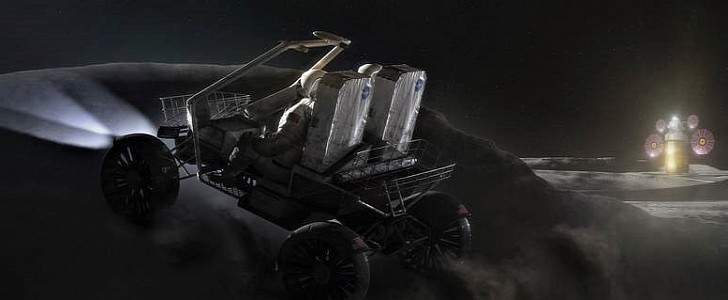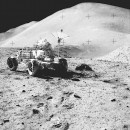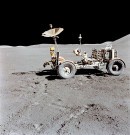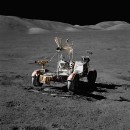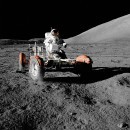NASA is asking American companies for ideas and solutions to transport Artemis astronauts around the lunar South Pole later this decade. And it says that its next lunar vehicle will not be your grandpa's old Moon Buggy, but a modern space vehicle ready to conquer our natural satellite.
As part of Artemis, NASA will put the first woman and the first person of color on the lunar surface and establish a long-term presence on the Moon. Once they arrive, the astronauts will need a lunar terrain vehicle (LTV) to navigate the rugged surface.
The first Moon Buggy was introduced on the Apollo 15 mission. With the LRV, astronauts were able to explore 17.25 miles (27.76 km) of various geological features, improving the scientific return of each mission. They were also capable of gathering more than ten times the amount of samples that they would've collected on foot.
Now, the next LTV has to be better than anything that was built before and last for at least a decade, spanning multiple Artemis missions. Through a request for information, the space agency is seeking input to tackle challenges that include the vehicle's lifetime, such as surviving the long, cold lunar night and alternatives to transport the vehicle to the Moon.
"We are trying to encourage advances in electric vehicle capabilities that could result in the most capable rover ever built," said Nathan Howard, project manager for the LTV at NASA's Johnson Space Center. "The Artemis LTV will be the ultimate terrain vehicle, with advanced power management, autonomous driving, and extreme environment technologies."
As part of NASA's lunar surface sustainability concept, which includes building an Artemis Base Camp at the lunar South Pole as well as other infrastructure to support the long-term exploration of the Moon, the vehicle may also be teleoperated to deliver supplies or scientific payloads between crew missions, allowing for large scientific returns.
Among other things, NASA wants to know if the U.S. companies are interested in supplying the lunar vehicle as a commercial service or as a product that the agency would buy and own. The space agency says that it is asking the industry for its feedback on LTV concepts until October 1st.
The first Moon Buggy was introduced on the Apollo 15 mission. With the LRV, astronauts were able to explore 17.25 miles (27.76 km) of various geological features, improving the scientific return of each mission. They were also capable of gathering more than ten times the amount of samples that they would've collected on foot.
Now, the next LTV has to be better than anything that was built before and last for at least a decade, spanning multiple Artemis missions. Through a request for information, the space agency is seeking input to tackle challenges that include the vehicle's lifetime, such as surviving the long, cold lunar night and alternatives to transport the vehicle to the Moon.
"We are trying to encourage advances in electric vehicle capabilities that could result in the most capable rover ever built," said Nathan Howard, project manager for the LTV at NASA's Johnson Space Center. "The Artemis LTV will be the ultimate terrain vehicle, with advanced power management, autonomous driving, and extreme environment technologies."
As part of NASA's lunar surface sustainability concept, which includes building an Artemis Base Camp at the lunar South Pole as well as other infrastructure to support the long-term exploration of the Moon, the vehicle may also be teleoperated to deliver supplies or scientific payloads between crew missions, allowing for large scientific returns.
Among other things, NASA wants to know if the U.S. companies are interested in supplying the lunar vehicle as a commercial service or as a product that the agency would buy and own. The space agency says that it is asking the industry for its feedback on LTV concepts until October 1st.
